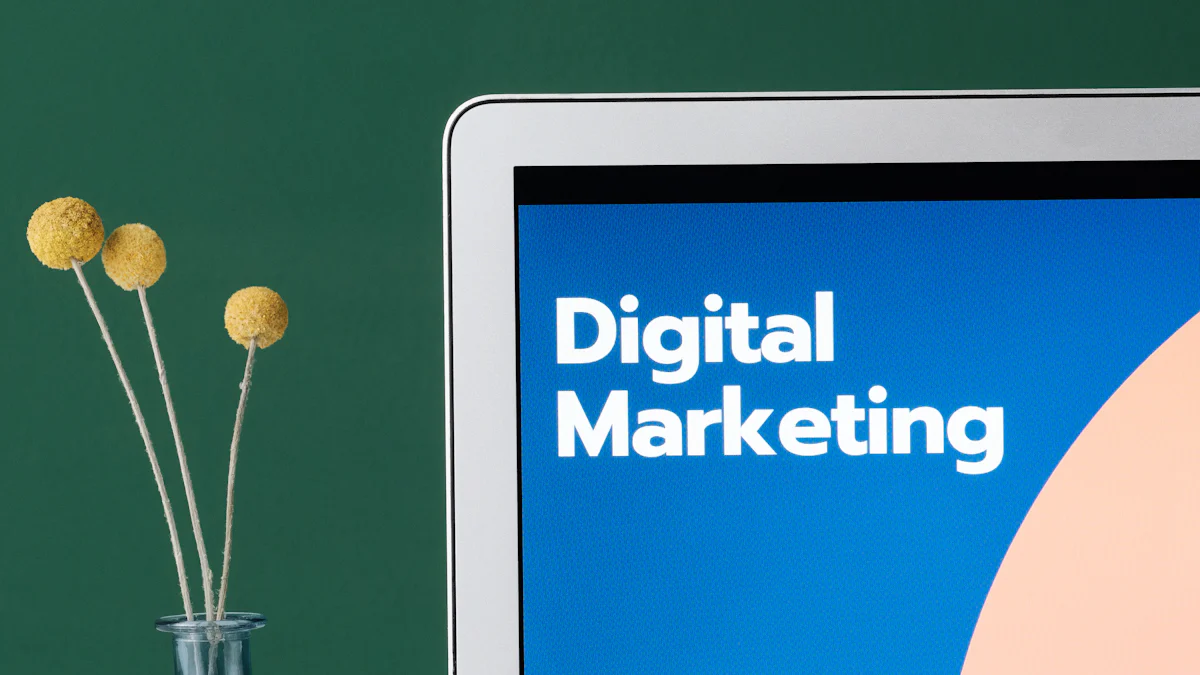How to Creatively Connect with Your Audience in 2025

Let’s face it—keeping someone’s attention today is harder than ever. In 2025, it’s even trickier. Adults now have an average attention span of just 8.25 seconds. Compare that to teenagers, who can focus for 28 to 48 minutes depending on their age. Children? They’re at 29.61 seconds. These numbers show how quickly people lose focus, especially with endless distractions like smartphones and notifications.
So, how do you stand out? Creativity is your secret weapon. It’s not just about sharing information anymore. You need to connect, surprise, and engage. Audiences in 2025 expect more than slides and speeches. They want experiences. Finding new ways to engage your audience will help you break through the noise and leave a lasting impression.
Start Strong
Craft a Memorable Opening
First impressions matter. The way you start your presentation sets the stage for everything that follows. A memorable opening grabs attention and makes your audience curious about what’s next. So, how do you do it? Start with a story. Stories tap into emotions, making your content relatable and unforgettable. For example, sharing a personal struggle or triumph invites your audience into your world. It creates a sense of shared humanity.
Another approach is to ask a thought-provoking question. Questions make people pause and think. They shift your audience from passive listeners to active participants. You could also use a surprising fact or statistic to spark curiosity. Did you know that storytelling leaves a stronger impression than raw data? It’s true. Stories stick with people long after your presentation ends.
Build Emotional Connections
Connecting emotionally with your audience isn’t just a nice-to-have—it’s essential. People remember how you made them feel more than what you said. To build that connection, share personal stories that resonate with your audience. Vulnerability shows authenticity, and authenticity builds trust.
Testimonials and social proof also work wonders. When you showcase real-world examples, you validate your message and make it relatable. Don’t forget to listen actively during discussions. Responding empathetically shows respect and strengthens your bond.
Want to go a step further? Acknowledge cultural nuances and incorporate relatable themes. This makes your presentation feel tailored and relevant. And don’t stop when the event ends. Follow up with your audience to maintain the connection and build loyalty.
Set the Right Tone
Your tone can make or break your presentation. It’s not just about what you say but how you say it. Think about brands like Netflix or Notion. Netflix uses an entertaining and bold tone to create camaraderie with its audience. Notion, on the other hand, keeps things clear and approachable, fostering loyalty.
You should aim for a tone that matches your audience’s expectations. If you’re speaking to a professional crowd, keep it empowering and respectful. For a casual group, a humorous or conversational tone works better. The key is to stay authentic. When your tone aligns with your message, your audience feels more connected to you.
Ways to Engage Your Audience

Use Real-Time Polls and Feedback
Want to make your audience feel like active participants instead of passive listeners? Real-time polls are a game-changer. They loosen up the room and turn attendees into contributors. By asking questions during your presentation, you can spark curiosity and start meaningful conversations. Polls also help you introduce topics naturally and adjust your discussion based on live feedback.
For example, you could ask, “What’s the biggest challenge you face in [your topic]?” This not only grabs attention but also gives you instant insights into your audience’s needs. Plus, gathering response data is quick and easy. Tools like Mentimeter, Vevox, and Poll Everywhere make this process seamless. Each has unique strengths, like Mentimeter’s global accessibility or Vevox’s free version for up to 500 participants.
"Incorporating the right type of online real-time polling ... has overriding benefits."
By the end of your session, you can even use polls to collect feedback. This ensures your audience feels heard and valued, which strengthens their connection to you.
Facilitate Interactive Q&A Sessions
Q&A sessions are a classic, but they don’t have to be boring. To keep things engaging, structure your session thoughtfully. Start by setting clear goals and choosing the right format—whether in-person, virtual, or hybrid. Breakout sessions can also work wonders for smaller, focused discussions.
Encourage participation by using polls to kick off the Q&A. For instance, ask attendees to vote on which topics they want to explore. This ensures the session stays relevant and interactive. If someone asks a challenging or off-topic question, handle it gracefully. Acknowledge their input, but steer the conversation back to your main points. If you don’t know the answer, admit it and offer to follow up later. Honesty builds trust.
Interactive Q&A sessions aren’t just about answering questions. They’re about creating a dialogue that makes your audience feel involved and respected.
Incorporate Group Activities and Discussions
Group activities are one of the most effective ways to engage your audience. They encourage collaboration and make your presentation more memorable. Activities like workshops, live polls, and gamified challenges can energize the room. For example, you could organize a team quiz related to your topic or use VR/AR experiences to immerse participants in your content.
To ensure inclusivity, set clear expectations for discussions. Use open-ended questions to invite diverse perspectives. For instance, instead of asking, “Do you agree with this point?” try, “How would you approach this challenge?” This encourages deeper conversations.
Creating a welcoming environment is key. Learn participants’ names, use icebreakers, and avoid putting anyone on the spot. When people feel comfortable, they’re more likely to share their thoughts.
Group discussions don’t just boost engagement—they also help your audience connect with each other. That’s a win-win for everyone.
Personalization and Empathy

Understand Audience Needs
If you want to connect with your audience, you need to know what they care about. Start by researching their needs and preferences. This helps you tailor your presentation to their expectations. Here are a few ways to do it:
- Qualitative Research: Conduct interviews or focus groups to understand their feelings and opinions. Open-ended questions work best for uncovering detailed insights.
- Quantitative Research: Use surveys or social media analytics to gather data about their behavior and interests. Tools like these can reveal what topics resonate most.
- Observe and Listen: Pay attention to nonverbal cues during your presentation. If you notice disengagement, adjust your approach to recapture their attention.
Avoid common mistakes like skipping audience analysis or overloading your slides with data. These missteps can make your presentation feel irrelevant or overwhelming. Instead, focus on delivering value and showing how your content benefits them.
Tip: Ask yourself, “What’s in it for them?” This mindset ensures your presentation stays audience-focused.
Speak Their Language
Your audience will tune in when you speak in a way that feels natural to them. To do this, identify their preferred communication style. Some people prefer concise, high-level information, while others want detailed data and evidence. You can figure this out by asking questions like, “What would make this session valuable for you?”
Pay attention to their responses and body language. If someone looks confused or disengaged, it might mean your style isn’t clicking. Adjust by simplifying your message or adding more context.
Using relatable examples and avoiding jargon also helps. For instance, instead of saying, “We’ll leverage synergies,” try, “We’ll work together to achieve better results.” Clear, simple language builds trust and keeps your audience engaged.
Show Genuine Empathy
Empathy is your secret weapon for building trust. When your audience feels understood, they’re more likely to connect with you. Here’s how you can show empathy during your presentation:
- Listen to their concerns without interrupting.
- Use active body language, like nodding, to show you’re engaged.
- Acknowledge their challenges and validate their feelings.
- Offer solutions that uplift and inspire hope.
For example, if someone shares a struggle, respond with, “I hear you. That’s a tough situation, and I appreciate you sharing it.” Small gestures like this make a big impact.
Empathy also boosts engagement. When people see you care, they view you as authentic and trustworthy. This fosters loyalty and makes your message more memorable.
Note: Empathy isn’t just about words. Actions matter too. A simple follow-up email or a thoughtful gesture can leave a lasting impression.
Sustaining Engagement
Use Humor Effectively
Humor can be a powerful tool to keep your audience engaged. It lightens the mood, makes your presentation memorable, and helps you connect on a personal level. But how do you use humor effectively? Start with personal anecdotes. Sharing a funny story from your own life makes you relatable and adds authenticity. You can also sprinkle in funny quotes or analogies. For example, Winston Churchill once said, “A good speech should be like a woman’s skirt: long enough to cover the subject and short enough to create interest.”
Visual humor works too. Add a cartoon or a humorous sign to your slides. These can break the ice and keep your audience smiling. However, humor comes with risks. Avoid jokes that might offend or isolate anyone. Stick to clean, inclusive humor, and plan it in advance. This ensures your jokes land well and resonate with your audience.
When done right, humor is one of the most effective ways to engage your audience and leave a lasting impression.
Master Non-Verbal Communication
Your words matter, but your non-verbal cues often speak louder. Facial expressions, body language, and gestures can make or break your presentation. A warm smile creates a welcoming atmosphere, while slouching might signal disinterest. Stand tall to exude confidence and use deliberate gestures to emphasize key points.
To improve, practice regularly. Rehearse in front of a mirror or record yourself to spot areas for improvement. Pay attention to how your gestures and expressions align with your emotions. Watching skilled speakers can also help. Observe their non-verbal cues and incorporate what works into your own style.
Mastering non-verbal communication takes effort, but it’s worth it. It helps you build trust and keeps your audience engaged throughout your presentation.
Break Monotony with Variety
Monotony is the enemy of engagement. To keep your audience hooked, mix things up. Vary your vocal delivery by changing your tone, pace, and volume. A well-timed pause can add drama, while a louder voice can emphasize a critical point.
Incorporate different activities to maintain interest. Use storytelling, visuals, or even a quick poll to shift the focus. These techniques not only break monotony but also create multiple ways to engage your audience.
Remember, variety keeps your presentation dynamic and ensures your audience stays attentive from start to finish.
Connecting with your audience in 2025 requires creativity, preparation, and adaptability. You’ve learned how to start strong, engage actively, and sustain attention with humor, variety, and empathy. Here’s what matters most:
- Understand your audience to meet their needs and create relevant content.
- Use tools like polls or VR to boost interaction and make your presentation unforgettable.
- Stay adaptable. Handle challenges with humor or honesty, and always have a backup plan.
Experiment with these strategies to find your unique style. When you connect authentically, your audience will remember you long after the presentation ends.
FAQ
How do I know what my audience wants?
Start by asking them! Use surveys, polls, or even social media to gather insights. Pay attention to their feedback and questions during your presentations. Observing their reactions can also help you adjust your approach in real time.
What if my humor doesn’t land?
Don’t stress! If a joke falls flat, move on quickly. Stick to light, inclusive humor that feels natural to you. Practice your delivery beforehand to boost confidence. Remember, humor is just one tool—you can still connect through stories, empathy, or visuals.
How can I keep my audience engaged during long sessions?
Break it up! Use activities like polls, group discussions, or quick Q&A sessions. Add variety with visuals, stories, or even a short video. Keep your energy high and check in with your audience to ensure they’re still with you.
What tools can I use to make my presentation interactive?
Try tools like Mentimeter, Slido, or Kahoot for live polls and quizzes. For virtual presentations, platforms like Zoom or Microsoft Teams offer breakout rooms and chat features. Experiment with what works best for your audience and topic.
How do I handle tough questions during Q&A?
Stay calm and listen carefully. If you don’t know the answer, admit it and promise to follow up. Redirect off-topic questions back to your main points. Showing honesty and respect builds trust with your audience.
Tip: Practice answering common questions beforehand to feel more prepared.
See Also
Strategies for Captivating a Massive Audience in 2025
Crafting Compelling Social Media Posts for 2025
20 Exciting Ways to Maintain Audience Interest in 2025
Evolving Roles in Audience Engagement for 2025
Essential Tips for Enhancing Audience Interaction at 2025 Events
